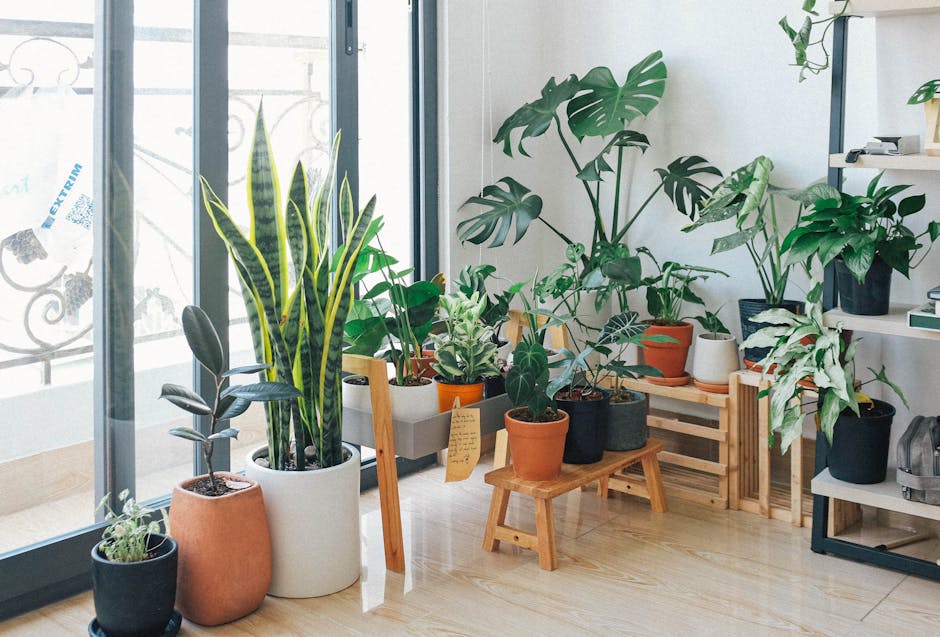Cultivating Community Resilience: Micro-Gardening for Urban Eco-Consciousness
Have you ever strolled through your neighborhood and felt like something was missing? The vibrant, green gardens of yesteryear have been replaced with concrete jungles, and many of us long for that lost connection to nature. Micro-gardening, the practice of growing small-scale gardens in urban settings, has emerged as a beacon of hope. It not only beautifies our surroundings but also fosters community resilience and eco-consciousness. Let's dive into how this green trickle-down effect can transform our cities and our lives.
What is Micro-Gardening?
Micro-gardening can be defined as the cultivation of small garden spaces in urban environments, often in areas that may seem unsuitable for traditional gardening. Whether it's a balcony filled with herbs or an underutilized plot of land turned into a community vegetable garden, micro-gardening makes use of available space to grow food, enhance biodiversity, and improve the quality of life in urban areas.
The reason micro-gardening is gaining traction is simple: it allows individuals and communities to reconnect with nature, even in the heart of bustling cities. For city dwellers, who might feel completely disconnected from the natural world, this practice offers a tangible way to cultivate a sense of responsibility toward the environment.
The Shift Toward Sustainable Living
As we witness increasing climate challenges, a shift towards sustainable living is more critical than ever. This shift doesn't just depend on governments and large institutions; individuals play a crucial role in the movement toward sustainability. Micro-gardening offers a platform for this in a way that is both accessible and impactful.
According to various studies, participating in gardening has direct mental health benefits, including reduced stress and anxiety. The American Psychological Association highlights that gardening can lead to increased feelings of well-being, thanks to the dopamine released during the cultivation process. By engaging in micro-gardening, urban residents are taking proactive steps toward a healthier lifestyle while contributing positively to their surroundings.
Additionally, small-scale gardening helps localize food production, reducing reliance on industrial agriculture, cutting down transportation emissions, and contributing to food security. This directly aligns with the principles of sustainable living, making micro-gardening a pillar of urban eco-consciousness.
Building Community Through Micro-Gardening
One of the fascinating aspects of micro-gardening is its inherent ability to build community. In many cases, these small gardens serve as communal spaces where neighbors can gather, share resources, and learn from one another. Imagine your local park transforming into a vibrant hub of flora with residents tending to the patches together. These spaces can break down social barriers and foster relationships that might not have otherwise existed.
Community gardening projects often lead to even larger urban agriculture initiatives. As neighbors collaborate, the complexity of running a thriving garden encourages knowledge-sharing and teamwork. Skills are learned, seeds are swapped, and friendships blossom, helping create a robust community network. Following the ethos of sustainable living, this connectedness often encourages residents to adopt more eco-friendly practices in other areas of their lives.
Enhancing Biodiversity with Micro-Gardening
Another important benefit of micro-gardening is its impact on urban biodiversity. In cities filled with concrete and asphalt, natural habitats for local wildlife are severely diminished. Micro-gardens can be a haven for pollinators, birds, and other wildlife, which rely on diverse plant life.
Implementing native plants into micro-gardening initiatives can significantly enhance the ecological value of various urban spaces. Native plants tend to require less water, maintenance, and fertilizers, thus creating a sustainable ecosystem right outside our homes. They also attract native insects, which are crucial for biodiversity. Investing in micro-gardening not only revitalizes our communities but positively impacts local ecosystems as well.
For more tips on how to embrace biodiversity in your space, check out our guide on cultivating urban biodiversity.
The Economic Aspects of Micro-Gardening
Beyond the environmental benefits, micro-gardening offers economic advantages for urban residents. By growing your own food, you can significantly reduce grocery bills. Even a small herbs and vegetables garden can provide a steady supply of ingredients for your meals. Additionally, engaging in micro-gardening may inspire home-based small businesses, such as selling home-grown produce or even handmade gardening supplies, further contributing to the local economy.
Moreover, the city's green spaces can increase property values, creating a win-win situation. Property owners with access to vibrant, well-tended gardens see higher demands for their residences. Those engaged in micro-gardening often share their stories and demonstrate the value of sustainable living to others, ultimately forming a broader movement for urban eco-consciousness.
To explore how sustainable practices can affect our economic lives more profoundly, visit our post on debunking myths about sustainable city living.
Steps to Start Micro-Gardening Today

Getting started with micro-gardening is easier than you might think! Here are some practical steps you can take to dive into this fulfilling endeavor:
1. Identify Available Space

Take a moment to assess the urban environment around you. Look for options like balconies, community parks, or even small sections of your garden. Being creative in utilizing available space can lead to productive gardening areas.
2. Choose the Right Plants

Once you've identified where you will plant, select the right plants for your micro-garden. Consider the climate, sunlight, and your culinary preferences. Herbs like basil, parsley, and mint are excellent starting points, as they grow quickly and can be utilized in various dishes.
3. Engage Your Community

Don’t underestimate the power of collaboration! Engage with your neighbors and discuss the possibilities for creating communal spaces. Organize planting days, harvest festivals, or even cooking events using harvested produce. This not only builds community but enhances the gardening experience.
4. Utilize Sustainable Practices

When gardening, opt for sustainable practices that promote soil health and biodiversity. Avoid harmful pesticides, utilize compost, and practice organic gardening techniques. Educate yourself on permaculture principles or consider setting up a rainwater harvesting system for garden irrigation.
5. Share Your Journey

Document your micro-gardening journey on social media or create a blog to share your experiences and insights. Not only will you inspire others to adopt similar practices, but you'll also build an online community focused on eco-conscious living.
Final Thoughts

Micro-gardening is more than just a trend; it's a movement that can redefine urban living. By cultivating small green spaces, we not only nourish ourselves but also foster stronger communities, enhance local biodiversity, and contribute to a more sustainable world.
So, roll up your sleeves, grab some soil, and start your micro-gardening journey today! With a little bit of patience and dedication, you’ll find that these tiny patches of greenery can create ripples of change far beyond your own backyard.
For more tips on approaching sustainable living from various angles and to learn about creative recycling and minimalist practices, be sure to check out our posts on adopting a buy-nothing mindset and embracing biomimicry for sustainability.







